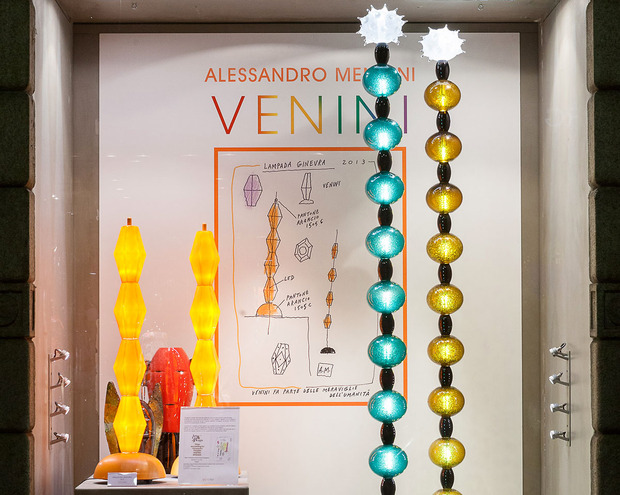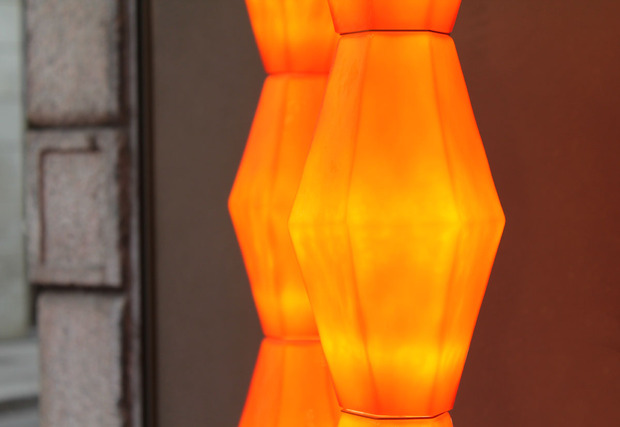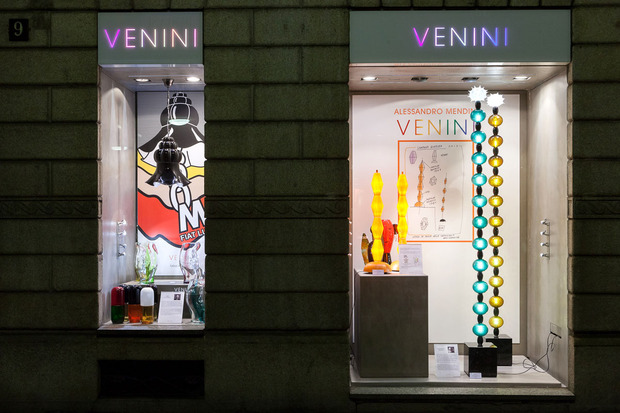Interview: Alessandro Mendini at Venini
Insights on the past and future of glass and the importance of craft from a multi-disciplinary design legend


Alessandro Mendini is a living legend in the field of international design and architecture. His versatility and outstanding ability to cross disciplines has helped pioneer the multi-pronged approach to design so commonly applied today, and has led him to become both a highly sought after director for forward-thinking publications like Casabella and Domus, as well as a range of companies from all over the world. He lends his talents to established brands but also promising young designers, and remains very involved in the definition of future forms of education. We had the privilege of meeting Mendini during the recent Milan Design Week at the Venini showroom, where we discussed the past and future of glassmaking, the role of masters and makers, 3D printing and his history working with one of the world’s premiere glassworks.
How long have you been working for Venini?
I’ve been working with Venini for so many years I can not even remember how many! With Venini I did some very interesting things, many of which using their signature techniques and colors, both very special. Over the years, little by little I came to realize vases, lamps, light sculptures, very large vessels, figures, horses, totems and so on. Sometimes the occasion was a product for their catalog, other times it was because of my attendance in special exhibitions, for which I asked them to have some specific things.
For example in 2002, for the Fondation Cartier in Paris, I created with Venini a great red face wearing golden earrings by Cartier, with archaic eyes inspired by the sculptures of Easter Island.
In 2005, for an exhibition in Athens, I made a blue vase with wings called Giotto, with whom I was going to represent Italy through the blue of the great Italian painter.
I also allowed Venini to meet with other companies. For example, one recent thing that is presented during the Milan Design Week at the Galleria Jannone, is Amuleto. It is a series of very technical lamps, characterized by a circular symbol: the glass is made by Venini while the Korean company Ramun has realized the electrical parts.

What is your relationship with glass?
Glass is clearly a material of great charm, but it is fascinating also to work within the memories of Venini. It is very difficult, because there’s always a moment of suspension which is meeting with the master craftsman. I do not go often in the furnaces—I go there every so often and they have an incredible appeal. However, I work at a desk, I’m not able to work with a glass master and tell him what to do. I have to get prepared for the furnace, also prepared for the fact that, like every craftsman, the master glassmaker always says “no, you can’t do that.” The technical abilities are theirs, not mine, and the relationship with them becomes really a true partnership on equal terms.
One of the ideas you lecture on is that of “The Makers,” yet one of the themes that emerged at this year’s Design Week is immaterial design, a form of lightweight, almost invisible design.
The story of The Makers is linked to the hypothesis to be able to work independently from the industry. In the world of makers, individualities tend to realize things with a do-it-yourself approach, through simple technologies and sophisticated materials. This also responds to needs related to the decline of educational institutions and the need for people to make things in isolation, away from institutional places. I am very interested in these issues and for two consecutive years I did an exhibition about makers at La Fabbrica del Vapore. Then there are the traditional makers, craftsmen, but this is a different story.
On the other hand, the evanescence of design is linked to the development of electronics, digital tools that become abstractions of communication and information. In the digital devices you can have an entire library and everything is dematerialized.

I think it is important that the sophistication of craft traditions remains. For example, you can not say that with a 3D printer you’ll make an interesting piece in glass. With this technology you can make a disposable glass, with a bad material, slightly polluting, badly designed. The tradition of glass, for example, from the Middle Ages until today is a tradition of sophistication in its use and rhetoric, in the ceremonial use of objects. This is related to the idea itself of the ancient, of the archaic, and it is a matter of anthropology.
The one does not deny the other, but my personal discourse is neither technological nor technocratic, it is a matter of humanistic utopia. If I find utopia in what I see (given that it is not purely technological), then I’m interested. For me, utopia means to aim at something that can not be reached, whatever it is.

Which projects did you present for Venini this year?
Genevra is a project born in the Swiss town, where a group of watchmakers asked me to make 13 different objects with 13 different materials. One of these was made by Venini and it was similar to this but not the same. I started with a form derived by Carlo Scarpa, a very attractive component for large chandeliers. This has been produced in eight copies only, because it is very complex and very slow in the making. It carries an LED lamp, with a metal base and a metal top.
“La colonna di Venini luminosa” was originally called only “La colonna di Venini” and was a tribute to the masters of Venini. The first version had no light inside, and each sphere was made with a precise technique used by a master of Venini, including Ettore Sottssass, Mario Bellini, Carlo Scarpa, Tapio Wirkkala, Fulvio Bianconi, Gae Aulenti among the others. This version has been fully revolutionized. There is an alternation of two colors but the blown glass is always mine, no more references to the company’s past.
Images by Paolo Ferrarini












